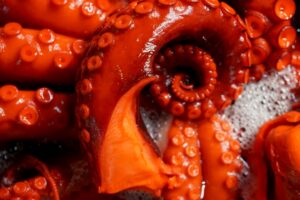Discover the Beauty of Robin Eggs: A Colorful Symbol of Spring
Spring is a season of renewal and new beginnings, and one of the most iconic symbols of this season is the robin egg. These small, oval-shaped eggs are not only beautiful, but they also play an important role in the ecosystem and have cultural significance in many societies. As we celebrate the arrival of spring, it is important to appreciate the beauty and significance of robin eggs and the role they play in the natural world.
Key Takeaways
- Robin eggs are significant in spring as they symbolize new beginnings and renewal.
- Robin eggs have a distinct blue-green color and are speckled with brown or black spots.
- The color of robin eggs represents fertility, growth, and protection in different cultures.
- Preserving robin eggs is important for the survival of the species and the ecosystem.
- Robin eggs play a crucial role in the food chain as a source of nutrition for predators and scavengers.
The Anatomy and Characteristics of Robin Eggs
Robin eggs are small and oval-shaped, with a hard shell that protects the developing embryo inside. They are typically blue or blue-green in color, with speckles or spots that vary in size and pattern. The color of robin eggs is thought to represent new life and growth, as well as the sky and water. In some cultures, robin eggs are also associated with fertility, rebirth, and good luck.
The Colorful Hues of Robin Eggs and Their Symbolic Meanings
The blue-green color of robin eggs is not only visually appealing but also holds symbolic meanings. It is thought to represent new life and growth, as well as the sky and water. The color blue has long been associated with tranquility, peace, and calmness. It is often used to symbolize hope, purity, and spirituality. Green, on the other hand, is associated with nature, growth, and renewal. When combined, these colors create a sense of harmony and balance.
In some cultures, robin eggs are also associated with fertility, rebirth, and good luck. They are seen as a symbol of new beginnings and fresh starts. In ancient times, robin eggs were believed to have magical properties and were used in rituals to bring about fertility and abundance. Today, they are often used as decorative elements in spring celebrations and are considered a sign of good fortune.
Nesting Habits of Robins and the Importance of Egg Preservation
Robins are known for their elaborate nesting habits. They build nests out of twigs, grass, and other materials, and lay their eggs inside. The female robin typically lays 3-5 eggs at a time, and both parents take turns incubating the eggs. It is important to preserve robin eggs and their nests, as they are vulnerable to predators and human disturbance.
Robins choose their nesting sites carefully, often selecting locations that provide protection from predators and the elements. They build their nests in trees, shrubs, or other elevated areas, and line them with soft materials such as grass or feathers. Once the eggs are laid, the parents take turns incubating them, keeping them warm and safe until they hatch.
The Role of Robin Eggs in the Ecosystem
Robin eggs play an important role in the ecosystem. They are an important food source for predators such as snakes, raccoons, and birds of prey. These animals rely on the protein-rich eggs to fuel their own growth and reproduction. In addition to providing food for predators, robin eggs also play a role in pollination and seed dispersal.
Birds that eat the eggs and hatchlings may spread seeds and nutrients throughout their habitat. As they move from one location to another, they may inadvertently carry seeds on their feathers or in their droppings. This helps to disperse plant species and promote biodiversity. In this way, robin eggs contribute to the health and vitality of the ecosystem.
The Science behind the Formation and Development of Robin Eggs

Robin eggs are formed inside the female bird’s body through a process called ovulation. When a female robin is ready to lay eggs, her ovaries produce mature eggs that are ready for fertilization. The male robin then mates with the female, transferring his sperm to fertilize the eggs.
Once fertilized, the eggs develop over a period of several days. During this time, the embryo grows and develops inside the egg. The eggs are then laid by the female and incubated by both parents until they hatch. The entire process, from egg formation to hatching, takes about two weeks.
How to Identify Robin Eggs and Differentiate Them from Other Bird Eggs
Robin eggs can be identified by their size, shape, and color, as well as the speckles or spots on their surface. They are typically small and oval-shaped, with a hard shell that protects the developing embryo inside. The color of robin eggs can vary, but they are usually blue or blue-green in color.
One way to differentiate robin eggs from other bird eggs is by their unique characteristics and nesting habits. Robins are known for building nests out of twigs, grass, and other materials, and laying their eggs inside. The nests are often located in trees, shrubs, or other elevated areas. By observing the nesting habits and characteristics of the eggs, it is possible to identify robin eggs and distinguish them from other bird species.
The Artistic Representation of Robin Eggs in Literature, Art, and Culture
Robin eggs have been featured in literature, art, and culture for centuries. They are often used as a symbol of spring and renewal. In literature, robin eggs are often used to represent new beginnings and fresh starts. They are seen as a sign of hope and optimism.
In art, robin eggs are often depicted in paintings, drawings, and sculptures. They are used to create a sense of beauty and tranquility. The vibrant blue-green color of robin eggs is visually appealing and adds a touch of elegance to any artistic composition.
Robin eggs have also been used in decorative arts such as jewelry and pottery. They are often incorporated into designs to create a sense of natural beauty and harmony. In some cultures, robin egg jewelry is believed to bring good luck and protect against negative energy.
The Cultural Significance of Robin Eggs in Different Societies
In addition to their artistic representation, robin eggs also hold cultural significance in many societies. In some cultures, robin eggs are associated with fertility, rebirth, and good luck. They are seen as a symbol of new beginnings and fresh starts. In ancient times, robin eggs were believed to have magical properties and were used in rituals to bring about fertility and abundance.
In traditional medicine, robin eggs have been used as a source of food and medicine. They are believed to have healing properties and are often used to treat various ailments. In some cultures, robin eggs are also considered a delicacy and are consumed as a special treat during spring celebrations.
The Beauty of Robin Eggs and Their Connection to Spring Renewal
In conclusion, robin eggs are not only beautiful but also play an important role in the ecosystem and have cultural significance in many societies. As we celebrate the arrival of spring, let us appreciate the beauty and significance of robin eggs and the role they play in the natural world. Whether they are seen as a symbol of new life and growth or as a source of fertility and good luck, robin eggs remind us of the beauty and wonder of the spring season.
FAQs
What are robin eggs?
Robin eggs are the eggs laid by the American robin, a migratory songbird found in North America.
What do robin eggs look like?
Robin eggs are typically light blue or blue-green in color with small brown speckles. They are oval-shaped and about 1 inch in length.
How many eggs do robins lay?
Robins typically lay 3-4 eggs per clutch, with one clutch per breeding season.
How long does it take for robin eggs to hatch?
It takes about 12-14 days for robin eggs to hatch after they are laid.
What do baby robins look like?
Baby robins are born naked and with closed eyes. They are pinkish in color and have a yellowish-orange beak.
What do robins eat?
Robins are omnivores and eat a variety of foods including insects, fruits, and seeds.
Are robin eggs edible?
While robin eggs are technically edible, it is illegal to disturb or remove them from a nest without a permit. It is also not recommended to eat wild bird eggs due to the risk of disease and contamination.



